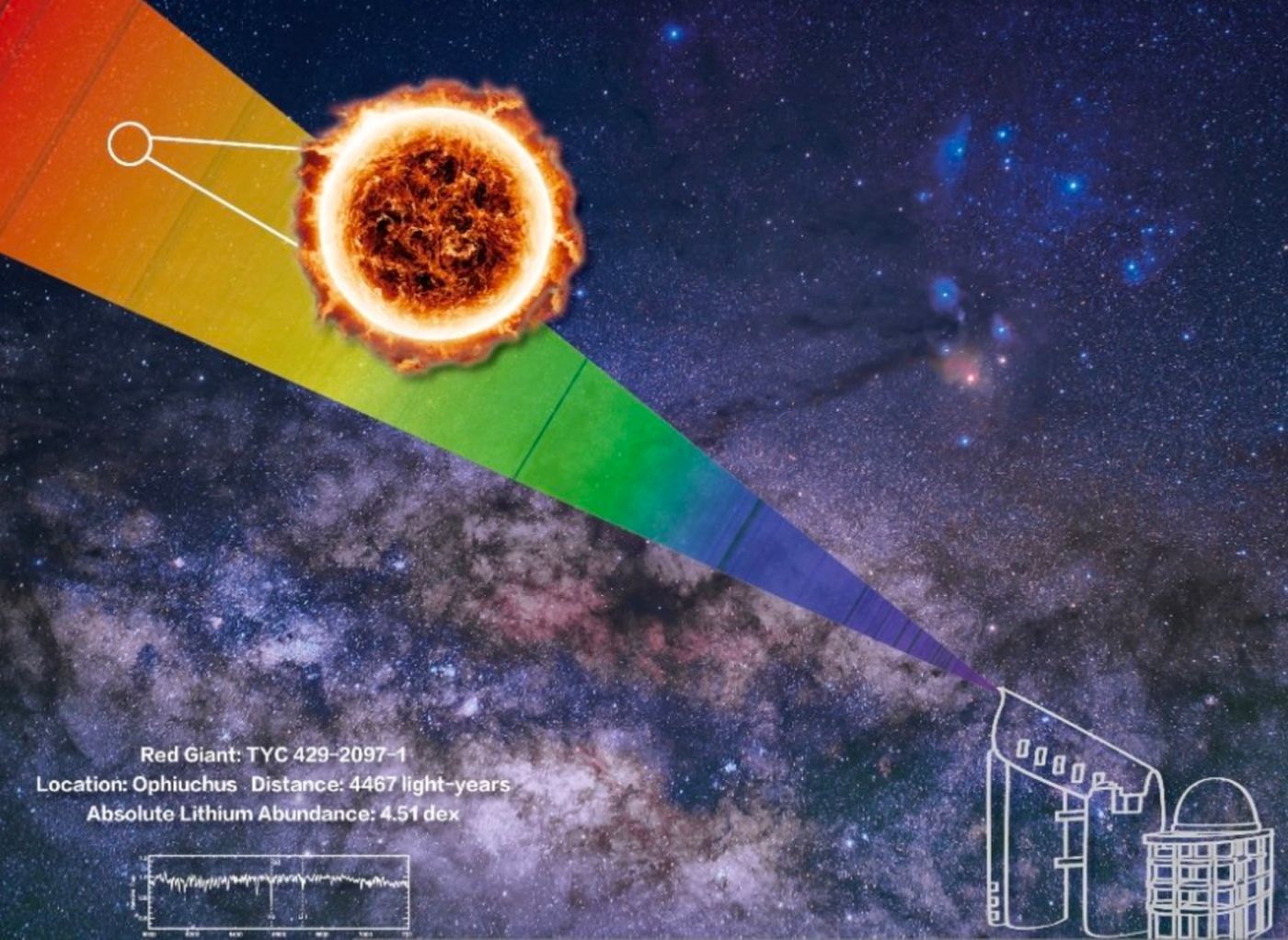Giant Star Sets Record for Lithium Composition, Researchers Say
While scanning far and wide with the Large Sky Area Multi-Object Fiber Spectroscopic Telescope (LAMOST), astronomers from the National Astronomical Observatories of China, Chinese Academy of Sciences found what is now being coined the most lithium-rich giant star ever discovered.
The findings, which were later validated with the Automated Planet Finder (APF) telescope at the Lick Observatory in California, appear in the journal Nature Astronomy.
Image Credit: NAOC
The star of the show (pun intended) is a red giant dubbed TYC 429-2097-1, and the researchers say it resides approximately 4,500 light-years away from Earth in the direction of the constellation Ophiuchus.
As it would seem, TYC 429-2097-1 contains 3,000 times more lithium than the average giant star, and this is particularly exciting to researchers because lithium is thought to be one of the elemental byproducts of the Big Bang.
“Lithium is one of the key elements that connects the Big Bang, the interstellar medium, and stars,” explained Yan Hongliang, one of the study’s lead authors. “The evolution of lithium has been widely studied in modern astrophysics, but our understanding of it is still quite limited.”
Related: Is this distant star on a crash course with our solar system?
A persistent mystery highlighted by the study lies within attempting to explain why TYC 429-2097-1 contains as much lithium as it does. According to the researchers, they’d expect such an old star to have used up much of its lithium composition by now.
One theory is that the star may have recently engulfed a nearby lithium-rich exoplanet, effectively absorbing its lithium composition. Nevertheless, this is just a theory, and more research is needed if we’re to understand the circumstances surrounding this unusual case.
“It is still too soon to draw any firm conclusions,” Yan added. “There are some hints that the lithium-rich phenomenon might be due to more than one scenario.”
Related: Astronomers capture the formation of a young exoplanet
Source: Phys.org, South China Morning Post









